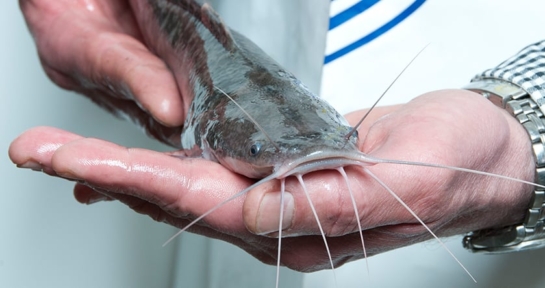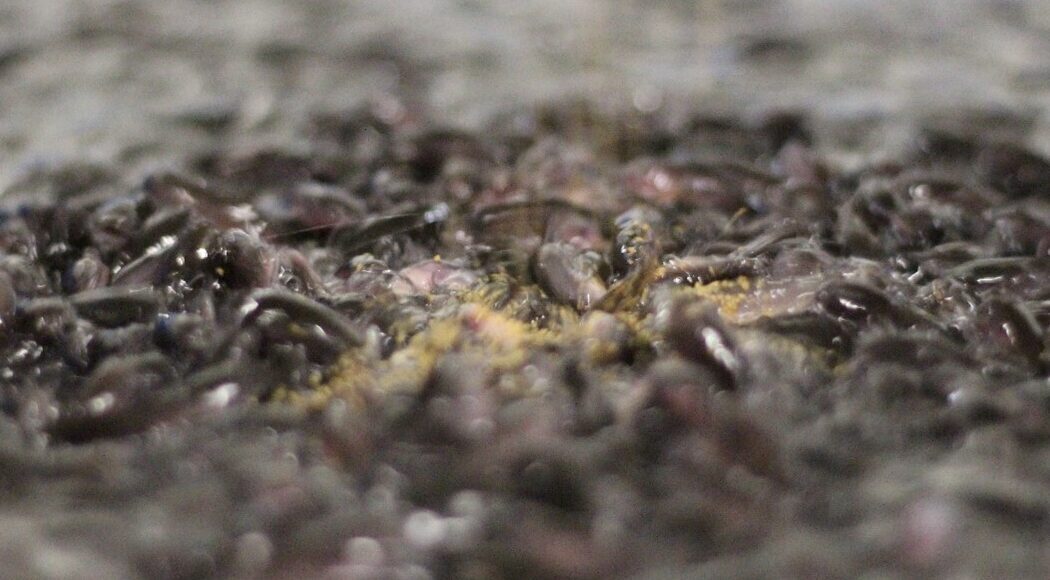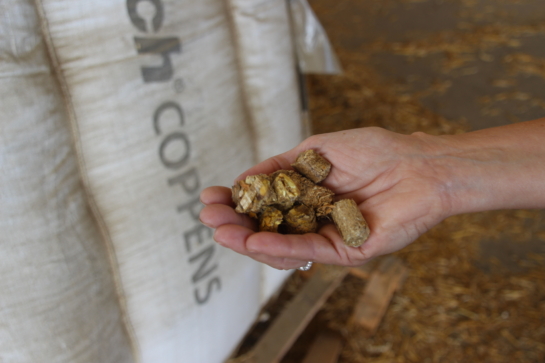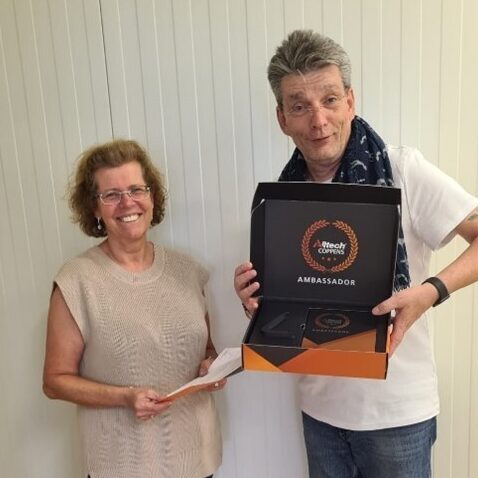Is circular fish farming the future?
Is circular fish farming the future?
Nutrition & Food
Is part of Bioenergie Lüchow GmbH Germany and responsible for culturing and processing farmed catfish. The fish farm and the parent company is a modern agricultural enterprise with an estimated area of about 770 hectares.
They grow all the renewable raw materials that are converted into energy in their biogas plants. In cooperation with their other business areas they manage to organize agriculture sustainably and to design it in such a way that one product is the basic building block for the next. They think in cycles.
"It is a natural circular ecosystem"
During our visit, we were told about their business, mission and vision.
Business areas
The main business areas include, arable (crop) farming, biogas production as well as fish farming and fish processing with the aim of creating a sustainable environment in agriculture and in the global aquaculture industry.
Catfish farm
The catfish farm is an enclosed farm, based on recirculatory aquaculture system (RAS) from the nursery to harvest. Hence, a sustainable aquaculture system. The catfish are held in fish tanks in 28⁰C warm water for a maximum of 7 months.
Although several components come together to ensure a successful production, Therefore, the farm depends on Alltech Coppens feed for better growth and quality of the fish from nursery to harvest. Alltech Coppens formulates feed on the 4 pillars of Fish Nutrition: Palatability, performance, pollution control and planet. All four pillars are important and taken into the balance of sourcing new/alternative raw materials.
We believe in our Plenty of Planet vision, which is helping farmers to feed the world, raise healthy animals and protect the environment through nutritional innovation.
"Our vision is to help farmers to feed the world, raise healthy animals and protect the environment through nutritional innovation"

Water cycle
Groundwater is used for the catfish farm and is constantly filtered through the filtering tanks composed of bio-media to remove excess nutrients, contaminants, and gases to ensure high water quality and to moderate consumption. The water is then heated to the required temperature for the fish. Filtered out substances are drained out on our surrounding fields and are used as natural fertilizers as well as for crop irrigation and thus, complete the water cycle. The harvested crops go to our biogas plant to generate energy which is used to power the fish farm and the entire production units.
Rearing
The process of rearing starts with the catfish used for hatchery. Females and male brood stocks are used for the reproduction. Using top koi-feed helps with reproduction. Prior to the reproduction, the brood stocks are kept separately in isolation tanks for stimulation and to prevent stress. Reproduction is by induced spawning; the females are then stripped for eggs which are then fertilized with the sperm (milt) of the male. The eggs are hatched and follow a 7-month life cycle in various systems.
"I can only make money if I treat my animals well, keeping them healthy"
System 1 - This is the nesting fish tank or the hatchery. It takes up to 12 hours for these catfish eggs to hatch and they remain in this system for about 10-14 days before being moved into the next system. This helps to control them to prevent fungus outbreak and to monitor their feeding. The quality of water oxygen and other essential parameters are also controlled as this is the fragile stage. They are fed with live feed for a while and simultaneously with dry feed (weaning period).

System 2 - The catfish remain 8 – 10 weeks in this tank feeding on Alltech Coppens Essence 0,2 – 0,3 mm (No longer available in the Alltech Coppens assortment).
System 3 - Fish in this system undergo different feed types depending on their weight. Thus, from Alltech Coppens Advance 0,3-0,5 mm (1-2 g), Alltech Coppens Start Premium 1 mm (2-5 g) and 1,5 mm (5-8 g), and Alltech Coppens Pre Grower 2 mm (8-35g).
System 4 - This is the sorting and harvesting phase. The feed used are Alltech Coppens Special Pro 3 mm (35-150g) and 4,5mm (>150g). They are harvested at a size of 1,3kg.
The catfish are then filleted, packaged, and transported – the product development is all done in-house.
Working together for a sustainable catfish farm – the interview.
What is the advantage of farming in a RAS system?
''It gives more control over the system and its environment. Thus, it is easier to monitor water quality, feeding rates, to control effluents and waste for a healthier and quality fish production with less or no impact on the environment.''

Why did you choose for farming particularly the African Catfish?
''Catfish are “hard fish species” and can adapt to extreme environmental conditions. It also meets the market demand based on taste and preference. Unlike other types of fish species, catfish are quite easy to handle provided the necessary conditions are met. They also convert feed into body mass more efficiently than some other species: FCR (Feed Conversion Ratio) is 80/100 (feed/kg fish).
Do African Catfish need a different feed for each life phase?
''Yes. The weight of the fish determines the type of feed it may need. From live feed to fine (powdered feed) and to pellets. All these feed types are obtained from Alltech Coppens to feed the fish at different phase of its lifecycle".
Do you follow/have a certain feed strategy?
''Yes, the amount of feed depends on the body weight of the fish. Therefore, Alltech Coppens, provides a protocol, which we follow as a guideline to ensure a successful production as they produce the best feed for RAS. This helps to minimize over-feeding and waste of feed".
Which ingredients are vital in an African Catfish diet? And why?
"Catfish requires essential nutrients of which protein forms the largest portion. Other ingredients include vitamins, fibre, carbohydrates, minerals and other important nutrients for growth and development both internally and externally. Hence these nutrients must be present in their feed in their right proportions of which Alltech Coppens takes all into consideration".
These mentioned elements are the reason why you chose to use Alltech Coppens fish feed?
"We believe Alltech Coppens feed takes into consideration the right amount of nutrients required for the growth of fish. And all feeds are tested before they are introduced to farms. Hence, the reliability. I believe in the vision of Alltech Coppens".
"An impressive "echo" of the Planet of Plenty vision"
You also work together with the University of Rostock; can you tell me something about this collaboration?
"The collaboration is more research based, where we test our water and deliberate on the best approach to ensure the quality of our water. We also work together on different research topics regarding African Catfish".
Many thanks to Max von Merkatz and Jones Wonder Oyiadzo for the tour and the interview.
"We think in cycles"
Nutrition & Food utilize the waste of one element to benefit another – it is a natural circular ecosystem. With their bioenergy process with carbon capture and storage, it is their aim to become Carbon-negative.
In collaboration we create positive environmental and social impacts.
Interactive link:
Alltech Coppens - Nutrition & Food brochure
Fishmagazin - Interview Nutrition & Food
Bioenergie Lüchow is part of the Alltech Coppens Ambassador Program.

Claudia Kolter - Alltech Coppens, Senior Account Manager and Max von Merkatz - Bioenergie Lüchow GmbH, CEO



